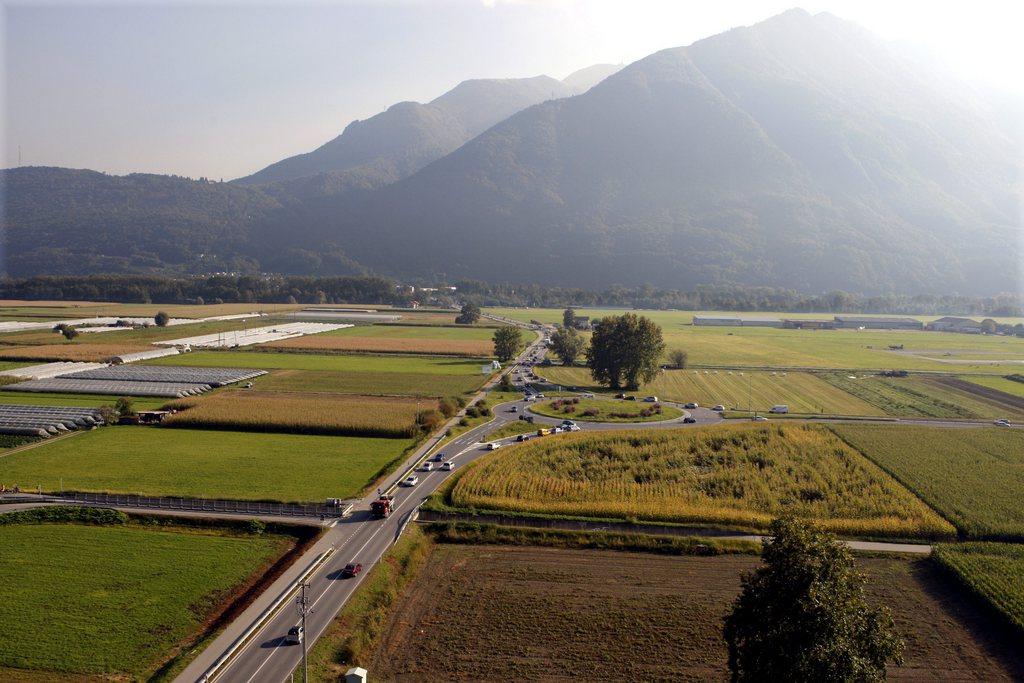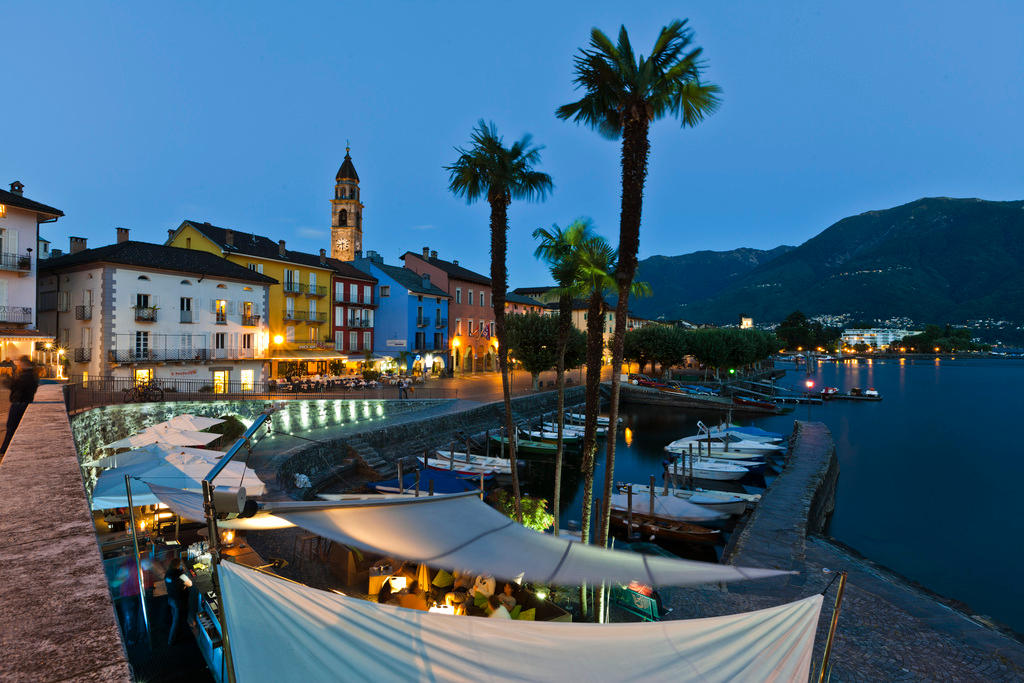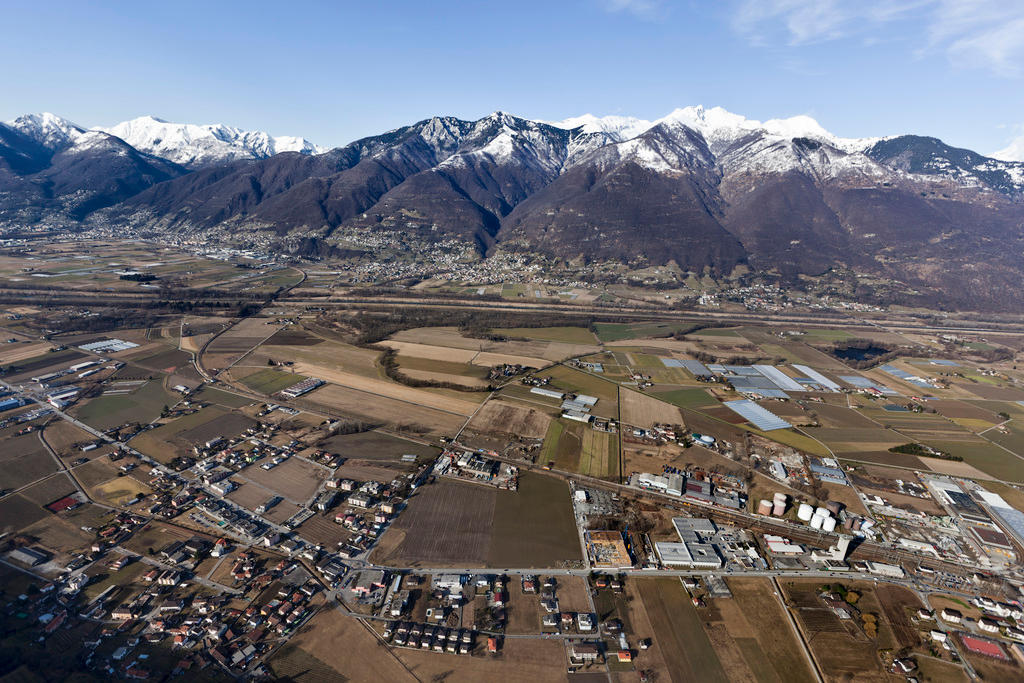A high-speed Ticino road advances at snail’s pace

A long-awaited highway project is finally in the works in the Swiss canton of Ticino, a victim of delay by direct democracy. It’s a story typical of Switzerland and the process of uniting competing interests.
This text is part of #DearDemocracy, a platform on direct democracy issues, by swissinfo.ch.
Lying on the sun-soaked southern side of the Alps, Locarno is one of the most renowned tourist resorts in Switzerland. Each year, the region notches up more than a million overnight stays.
While arriving by train is unproblematic, the road is another story. Drivers often face stop-and-go traffic on the 20-kilometre-long (12.4-mile-long) stretch from the north-south motorway exit to Locarno.
“Locarno is the only big agglomeration in Switzerland that is not connected to the national road network,” says Claudio Zali, president of the Ticino cantonal government who is responsible for the department of construction and environment in the region. The road, which is partly dual carriageway, narrows to a two-lane bottleneck along the way.

Typically Swiss
The road is such a complicated affair because very diverse interests collide in a narrow space: agriculture, conservation, leisure, private and goods transport, tourism, local and regional business – as is the case almost everywhere in Switzerland. So the story of this highway is also a story of Switzerland, where as many demands as possible have to be reconciled with one solution. This is, after all, the idea of direct democracy, which has many advantages – but also one disadvantage. It is slow, sometimes frustratingly so.
For decades, the municipalities in the Locarno government have been demanding a new, fast road to Bellinzona, the “gateway” to the north-south motorway.
In the 1990s, a promising project was proposed. But in 2007, Ticino voters nixed it in a referendum after the planned route drew harsh criticism in many circles.

Back to the drawing board
With their veto, voters had abruptly shot down years of planning. The authorities and planners were disappointed because they landed back at square one.
Not wanting a second such debacle, those responsible drew their lessons. So when they started planning the connecting road afresh, they focused on participatory decision-making processes. If citizens had a say from the beginning, then the opposition to the new road would be smaller, the thinking went.
The cost of giving everyone a say
But such a process has its price: time, paid in patience. The second round of planning involved the following steps.
A new feasibility study was conducted from 2009 to 2010. In 2012, the cantonal government sent three proposed variants of the route to the Federal Roads Office in Bern for evaluation.
In 2015, the federal authority decided on a variant which largely ran through a tunnel along the side of a mountain. From 2016 until 2018, the cantonal government developed this tunnel variant into a new project.
More than 10 years have passed since the 2007 referendum, and the highway still only exists on paper.
Another step, but not the last
In the summer, members of the public were given a chance to voice their opinions with a view to including them in decision-making. Over the course of several evening information rounds, it became clear that the village of Quartino, on the southern entrance of the planned tunnel, was enthusiastic. But in Sant’Antonino, on the northern side, there were a range of concerns. One of these was that the proposed junction would swallow up some agricultural terrain. The tunnel designed to link communities began to divide them.

“We took these concerns very seriously, amended the project and adapted it where possible,” says Matthias Neuenschwander, an engineer and the project coordinator.
The efforts were effective, as the Sant’Antonio municipality responded positively to the amendments. By the end of the year, the adapted project will be sent back to the federal authorities in Bern for approval.
Stamina required
But the end of the planning process is still a long way off. There are still two major obstacles to overcome: first, the entire approval process, and then the financing, which is more difficult.
The canton can’t finance the CHF1.45 billion ($1.44 billion) road, so the federal government will have to pay. In 2020, it will take over responsibility for the project, which will take up more time. First, the Swiss government will have to decide what priority to give this connecting road. In the best-case scenario, the government will decide on that question in 2021. After that, authorities and associations in Ticino will have the right to appeal against the proposals.
Conservationists and environmental groups have so far responded favourably to the project, given the tunnel solution. So the appeal process could go quickly.
Still, this means the tunnel will take eight to 10 years to complete. The first car will not drive on the planned road before 2035, more likely 2038 according to some. All in all, it will take almost half a century to build a 13-kilometre highway, or three years per kilometre.
What is certain is that there will be no more cantonal referendums on the highway if it is a federal project. The 2007 scenario of a resounding “no” from the electorate cannot be repeated. Neuenschwander, the transport planner, is philosophical about such time-frames.
“Cathedrals can’t be built in a couple of years either,” he says.
Big infrastructure projects are traditionally closely connected with direct democracy in Switzerland. The most recent examples are the new rail tunnels through the Gotthard and the Lötschberg, which were opened in 2016 and 2007 respectively. The second Gotthard road tunnel is next on the docket and is expected to be opened for traffic in 2027.
The direct democratic process usually results in voter support for proposals.
A landmark was the 1898 referendum on the nationalisation of the railways. With its “yes” vote, the Swiss electorate not only laid the foundation for the Swiss Federal Railways (SBB), but also for Switzerland’s political tradition of consensus and concordance.
Citizens are included early in the planning, via information events and hearings. Concerns and criticisms generally lead to amendments of a project. At the end of the process there is a referendum, which usually leads to a positive result.
But there are exceptions: In 1990, Swiss voters approved a people’s initiative for a ten-year moratorium on building new nuclear plants.
Translated from German by Catherine Hickley

In compliance with the JTI standards
More: SWI swissinfo.ch certified by the Journalism Trust Initiative








You can find an overview of ongoing debates with our journalists here . Please join us!
If you want to start a conversation about a topic raised in this article or want to report factual errors, email us at english@swissinfo.ch.